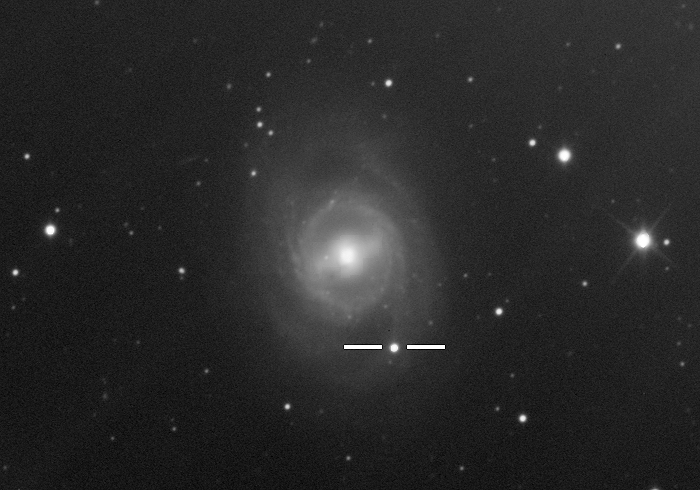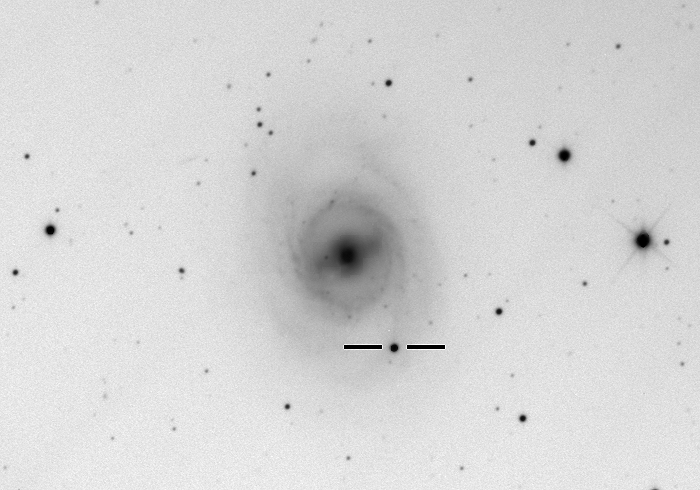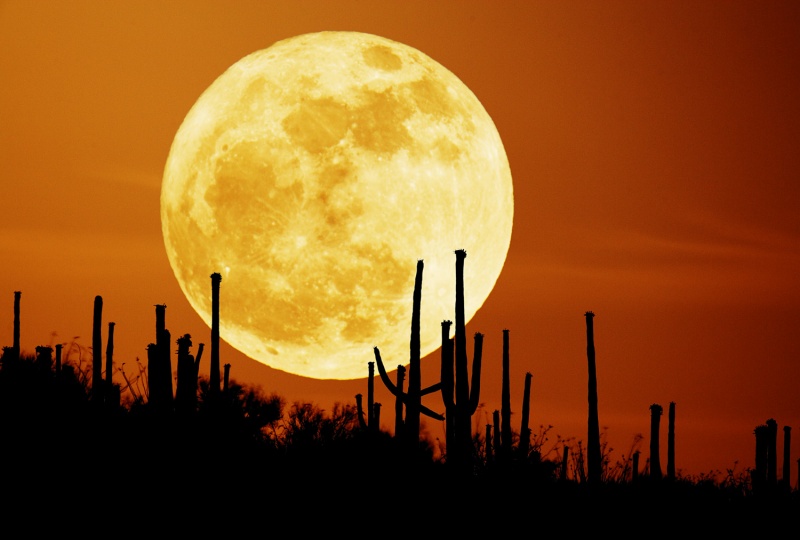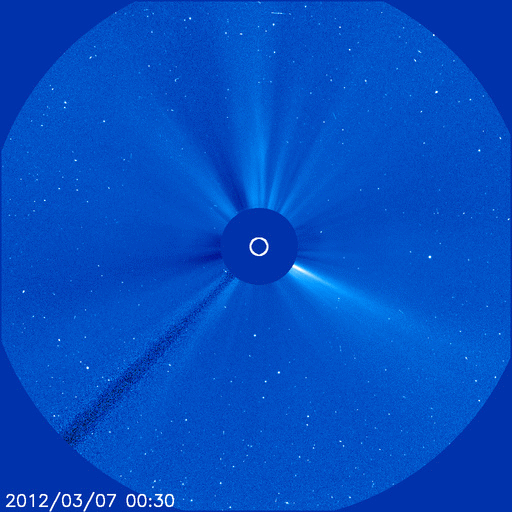For All Mankind is available on hulu for free right now. If you haven't seen it, it's a documentary on a few of the Apollo missions, focusing mainly on the 11th mission and includes real Nasa footage as well as some interviews from the 60's. There's no actual commentary, it's mainly just space footage and some interviews. The soundtrack is pretty awesome though since it's done by Brian Eno, and it's especially fitting for the movie. Instead of the really brass heavy patriotic soundtracks typically featured in space films it's got more of a 'weightless' sound as if you're in space, if that means anything at all. The song An Ending (Ascent), pretty recognizable from the movie 28 day's later, I kinda think it fits better in a space film but you can be the judge of that. Holla to my space zombies woot woot!!
The soundtrack and the movie for those interested.
AstroKyle
Thursday, March 22, 2012
Wednesday, March 21, 2012
Supernova 2012aw
In Messier 95, which is about 39 million light-years away, a supernova was detected by astronomers. The supernova, SN 2012aw, was discovered on March 16, 2012. SN 2012aw was classified as a type II supernova. Type II supernovas occur when the star, before collapsing, has more than 9 times the solar mass. The video is a sequence of images (from Parijat Singh's flickr) taken from March 15 to March 16. Here's the astronomical telegram.
 |
| from Greek amateur astronomer Anthony Ayiomamitis |
 |
| an inverted version of the first, the supernova is a bit easier to determine |
source: persius.gr , wikipedia.org, badastronomy
Wednesday, March 14, 2012
Early Star Formation
 |
| Diagram of phases in stellar formation |
source: phys.org, youtube
Sunday, March 11, 2012
Why is the moon yellow, white, red or grey?
When observing the moon from different periods of the day or year, the moon can appear to be different shades of red, yellow, or white. The effect Earth's atmosphere has on the colors we observe is the primary factor in the moon's appearance. The atmosphere absorbs some light and scatters mostly blue light. This results in more of the blue light being scattered from the overall light, causing the observed light to be less blue. If light is passing through more atmosphere to get to the observer less blue light is seen and more red light is seen. Harvest moons occur during the autumnal equinox. Traditionally harvest moon allowed farmers more hours of farming since the period of time between sunset and moon rise was relatively short. During the autumnal equinox, the moon rises earlier in the night and remains at a low angle with the horizon. The light reflected by the moon passes through a greater amount of the Earth's atmosphere and gives the moon a reddish yellow shade. This is also the reason for the sun appearing red along the horizon during sunset or sunrise. When the moon reaches our zenith, it has a whitish grey color.
source: universetoday, wikipedia
Sunspot AR 1429
 |
| AR 1429: group in the top right |
On March 10, sunspot AR 1429(pictured in the in the top left) began releasing two powerful M class solar flares. The classification of solar flares is done by measuring the peak flux, in watts per meter squared, with a logarithmic scale. A-type flares are the smallest in magnitude and X-type are the largest. M-type flares are just below X-class. A coronal mass ejection was also observed. Coronal mass ejections occur when a large amount of ionized particles as well as electromagnetic radiation are released. The CME observed by LASCO (Large angle and spectrometric coronagraph) pictured in the top right. During a solar storm, a lot of particles in Earth's upper atmosphere becomes ionized then recombines causing a release of radiation down towards earth's surface. Astronomer Thomas Ashcraft captured these frequencies and can be heard at this link. Another cool thing about solar flares is sometimes radio signals are able to propagate for longer distances. Sometimes radio waves will be reflected off of the ionosphere allowing signals to travel much longer distances than usual.
source: spaceweather.com, nasa.gov
Thursday, March 1, 2012
NGC 4449 Merger
On February 8, the National Astronomical Observatory in Japan announced the discovery of a merger of two dwarf galaxies, NGC 4449 and a smaller nearby companion galaxy. The merger was evident by stellar streams detected in earlier images, but not confirmed. Stellar streams are one of many details astronomers use to identify merger events. Much of the physics behind galaxy formation is being explored today. The mergers of smaller dwarf galaxies have been a relatively unexplored area in astronomy and this discovery helps specifically in the reasoning behind the halo of stars surrounding the NGC 4449 host galaxy.
source: noaj.org
source: noaj.org
Sunday, January 29, 2012
Subscribe to:
Posts (Atom)





